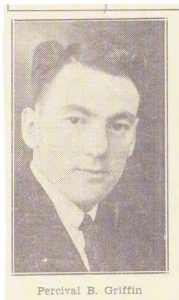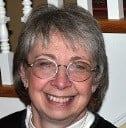 I recently read one family historian’s method for gleaning her father-in-law’s stories: she would write questions on slips of paper and put them in a Mason jar. When her father-in-law visited, he’d choose one slip and question from the jar, and she would write down whatever story he told. It’s the kind of method I wish I’d thought of to entice my reticent family to talk!
I recently read one family historian’s method for gleaning her father-in-law’s stories: she would write questions on slips of paper and put them in a Mason jar. When her father-in-law visited, he’d choose one slip and question from the jar, and she would write down whatever story he told. It’s the kind of method I wish I’d thought of to entice my reticent family to talk!
We are always encouraged to ask our living family members about their personal stories, and in so doing we must take what they choose to tell. In recording these stories for posterity, however, we often must weigh the truth of what we’re told against what facts we might have, realizing that those facts might completely change the color and substance of the story and our perception of the teller.
I do not refer to hurtful, damaging lies here – no distortions of the facts used to cover an unpleasant truth, but to those innocent fabrications and prevarications that people often tell for self-aggrandizement, to be more politically correct, or to just tell a good, entertaining story. As Samuel Johnson said, “A jest breaks no bones.”[1]
For example, Percy Griffin (1911–2006) was a quintessential Yankee storyteller, quick of wit and humor. He loved to tell a good story, even if he had an audience of only one, and loved to weave the absurd into each of them. If you missed it, he was happy; if you called him on it, he was delighted. One of his favorite stories concerned his ride home in a blizzard one night when he was “less than able” to guide his horse. His punch line was always that the horse found its way home through the driving snow, and stopped only when its nose touched the home-barn door. Percy’s stories were always humorous, entertaining, and credible because they never varied, and even now his grandchildren can recite them verbatim as he told them. There was almost always someone else to verify his exploits, but no written record to check.
Except he wasn’t, he didn’t, and none of those exploits happened.
Elmer F. (1916–1993) was a pilot in the Army Air Corps during World War II, with a fund of stories of his escapades in that time. For example, he once flew a B-17 under the Brooklyn Bridge, and as punishment was assigned to flying night patrol at an altitude of only 50’ along the Rio Grande River, searching for possible German spies walking along the banks. He also flew a B-25 Mitchell to Alaska with his crew as part of the diversion for Doolittle’s Raid.
Except he wasn’t, he didn’t, and none of those exploits happened. Elmer was a corporal, not a pilot (i.e., an officer), in World War II, and while he was in the U.S. Army Air Forces (from 1943 to 1946; the Army Air Corps was folded into the U.S. Army Air Forces in 1941), he was a mechanic cross-trained as a gunner and radio operator.[2] The stories were told only to family, and never used in any official capacity. This is a different set of alternative facts, easily accepted by family. (“Why would he lie?”)
The truth came to light after his death when his military records were ordered for his widow’s benefits application. However, Elmer, an electrician by occupation, in later civilian life was indeed a pilot, and a good one. His family can tell true, first person stories of his managing his M Series Cessna 310 out of a Bermuda Triangle vortex, and of his skill in flying if things went wrong with the airplane (my kind of pilot!). All concerned lived to tell those tales. The truth didn’t change how the family saw Elmer, but instead added color to an already interesting personality.
The real story is not always accepted while the “alternative facts” are preferred. Sometimes the storytellers will steadfastly cling to a story as fact despite all evidence to the contrary. One elderly San Francisco woman, a Roman Catholic proud of her French ancestry, asked me to trace her father’s ancestors to prove her direct lineage from Bishop Alemany of San Francisco,[3] a story she loved to repeat. I traced and confirmed her surname, Alemany, and paternal line to Spain in the 1500s, a line which did not include the good bishop.
Instead, I found a fascinating story of Sephardic Jews repeatedly fleeing Spain and its Inquisition to live in Algiers (her father had actually been born there). She was unimpressed, insisting “that was a long time ago,” and that she was directly related to Bishop Alemany, ignoring the likelihood that the good Bishop most likely had neither progeny nor direct connection to her family.
She was unimpressed, insisting “that was a long time ago”...
There are so many reasons why people “prevaricate” in this harmless, sometimes confusing, and often entertaining way that it’s hard to decide how to handle these “family stories” when we’re confronted by them. What to do with these “alternative facts?”
I write them down as they’re told as part of the whole story, part of the family narrative, adding nonjudgmental color and depth to our ancestors’ lives without rewriting family history. Sorting out the alternative facts from the truth is part of the challenge of family history research. Whether or not they are ever further repeated is another decision, another consideration of whether or not the revelation of the untruth will be received as just another story, an anecdote that will cause laughter accompanied by a knowing shake of the head and a nod of understanding.
In some families, one can get a headache from all that understanding!
Notes
[1] Samuel Johnson, Boswell’s Life of Dr. Johnson.
[2] DD214 Enlisted Record and Report of Separation Honorable Discharge; historians will note that Doolittle’s Raid took place in April 1942, a year before Elmer enlisted.
[3] Joseph Sadoc Alemany y Conill, O.P. (3 July 1814–14 April 1888), first Archbishop of San Francisco 1853–84.
Share this:

About Jan Doerr
Jan Doerr received a B.A. degree in Sociology/Secondary Education from the University of New Hampshire, and spent a long career in the legal profession while researching her family history. She has recently written and published articles for WBUR.org’s Cognoscenti blog: “Labor of Love: Preserving a 226-Year-Old Family Home and Preparing to Let It Go” and “The Value of Family Heirlooms in a Digital Age.” Jan currently lives with her attorney husband in Augusta, Maine, where she serves two Siamese cats and spends all her retirement money propping up a really old house.View all posts by Jan Doerr →